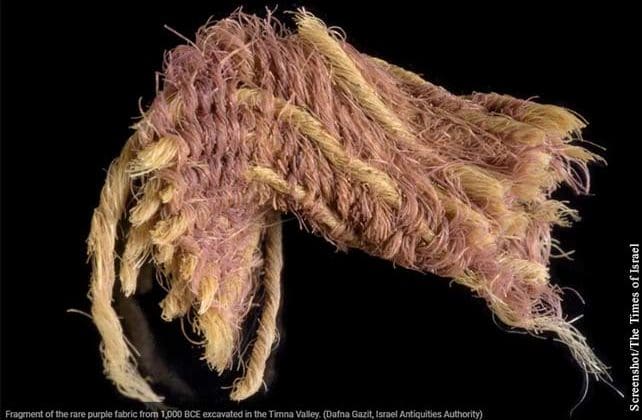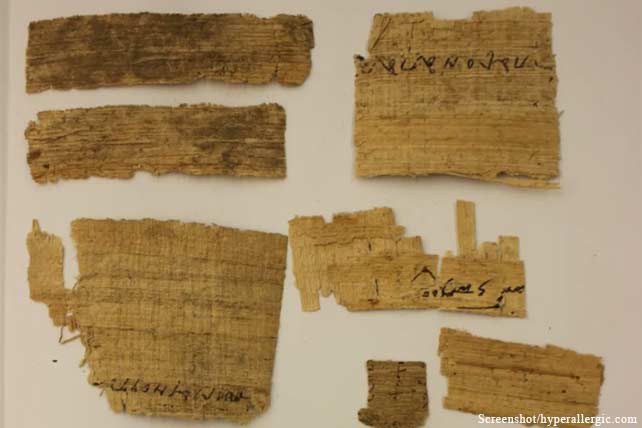
The Times of Israel reports that researchers have found three purple textile scraps that date back to 1,000 BCE (Before the Common Era), claiming the came from King David’s era. The recent cloth findings are the earliest ever for the region, and ties them to the Edomite kingdom.
Researchers use radiocarbon testing that allow them to determine how old the fabric is that was excavated in the Timna Valley near Eilat. The dry climate in the region allow for great preservation of organic materials.
The vibrant long-lasting color called “true” or “Tyrian Purple” comes from dye glands found in murex sea snails that are located on the shores of the Mediterranean Sea. Producing the dye takes several days, and would only be worn by royalty, priests, and nobles.

Tel Aviv University Professor Erez Ben-Yosef, who has been excavating the Timna Valley region since 2013 said, “It is a very early period to find ‘true purple’ in use and it’s a very strange location. It’s deep in the desert, where we didn’t [traditionally] think these prestigious materials were in use. The discovery offers additional evidence for our new understanding of nomadic people at that time period, at the time of the emergence of these ancient kingdoms of Israel, Edom, Moab, Amon, the local kingdoms of the biblical time.”
Israel Antiquities Authority’s curator of organic finds, Naama Sukenik said, “I’m so happy that Erez [Ben-Yosef] gave us the opportunity to peek into the clothes closet from the period of David and Solomon and see the wardrobe of the elite that lived in the period at the copper mines. I suppose that if we were to peek into David and Solomon’s closet we’d see similar clothing — and perhaps even more true purple.”
Museum of the Bible Return Items to Egypt and Iraq
Museum of the Bible chairman of the Board and Hobby Lobby‘s President, Steve Green released a statement last week which reported the Museum had returned 5,000 Egyptian items to the U.S. government on January 7, 2021 and was delivered safely to Egypt.
The items returned included approximately 5,000 papyri fragments which were sold to Hobby Lobby Stores by Professor Dirk Obbink. An earlier report said that, “The Museum of the Bible, saying it purchased the artifacts “in good faith,” confirmed the items were “sold illegally” to them by a “known expert.” Four of the items are currently property of the museum, and the rest belong to Hobby Lobby as part of its Green Collection. Although the artifacts weren’t on display, some were part of a traveling exhibit before the museum opened.”

Green also stated the museum had “initiated the shipment of the 8,106 clay objects to The Iraq Museum in Bagdad,” and said that “going forward, we will continue to look for ways to partner with The Iraq Museum, The Coptic Museum, and other institutions, to provide assistance with preserving and celebrating the rich cultural histories of those countries and many others.”
Since open in November 2017, The Museum of the Bible has encountered anything but just a quiet exhibit. In 2017 Hobby Lobby was fined $3 million for acquiring artifacts smuggled from Iraq. In 2018 the museum removed five Dead Sea Scrolls that testing revealed to be fake and returned a medieval New Testament manuscript that had been stolen. On March 13, 2020 a team of independent investigators found that sixteen Dead Sea Scroll fragments on display at the museum were fake.
